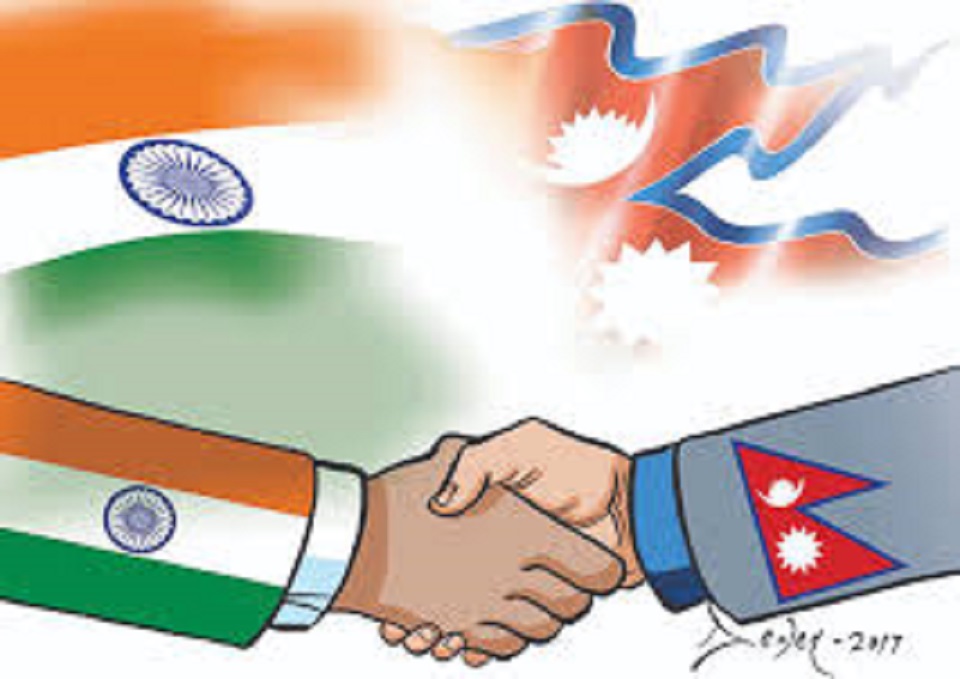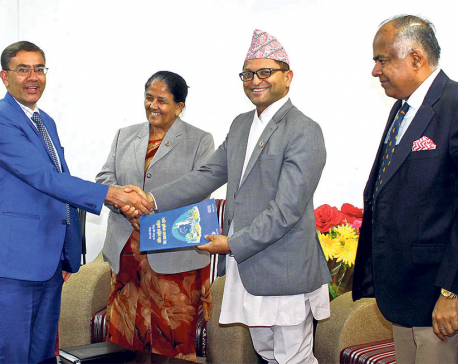
OR
Roadmap to re-set Nepal-India relations
Published On: June 23, 2020 07:00 PM NPT By: Shambhu Ram Simkhada

Both sides must now resist making inflammatory statements or tit for tat responses, utilizing a brief “cool down” period to recognize the problem and change misperceptions.
The Limpiadhura, Kalapani, Lipulekh border dispute has taken Nepal-India relation to one of its historic lows. In the immediate aftermath of changing maps and heated debates calling their own claims as based on historical evidence and questioning the motive of the other, a “cooling down” period to prevent relations from deteriorating further may be needed. But sooner than later both South Asian neighbors, interlinked with inextricable bonds of history, geography, politics, economics, culture and religion, must meet to resolve the problem through serious and friendly negotiations.
The following roadmap aims to prevent the situation from escalation and prepare the ground for strengthening relations on a new even keel.
Prevention
Due to long internal political transition emphasis with which Nepal raised the issue may have fluctuated, but Kalapani has been an issue in Nepal-India relations since long. Despite Nepal’s longstanding claim, when some Indian officials and even scholars ask questions such as “on whose behest is Nepal ratcheting up things against India?”, Nepali side feels compelled to respond “if Indian scholars, leaders, officials and diplomats want better relations one of the first things they must do is get rid of the thinking that Nepal, a historically independent nation of 29 million tolerant, peace loving proud and brave people, the well-known Gorkhas included, is incapable of raising issues of what it regards as its vital national interest and dignity on its own”.
Both sides must now resist making inflammatory statements or tit for tat responses, utilizing a brief “cool down” period to recognize the problem and change misperceptions. Indians must not see the China card in everything Nepal does. Nepalis must not blame India for all things going wrong in Nepal. Hardening positions will make it more difficult to come to a reasonable settlement later. So, preventing the situation from further deterioration is the first step.
Preparation
The Sugauli Treaty of 1816, the only boundary treaty between India and Nepal, gives legitimacy to Nepali claim of the territory East of Kali River. Many maps prepared by the British themselves show Limpiadhura as the source of the Kali. The British, having realized the strategic value of the area in their Great Game competition, seem to have changed the maps later. Independent India, inheriting that map, claims effective control of the disputed areas. Nepal too has proof of conducting election, census, registration, tax receipts etc.
Obviously, not to allow pieces of land affect the vital friendship, leaders agreed to entrust border delineation and demarcation to a technical committee, which is reported to have resolved 98 percent of the problems except in two places. Both Prime Ministers agreed to entrust their respective Foreign Secretaries to resolve the remaining more complex and sensitive areas, one of which is Kalapani. Both sides should now prepare thoroughly their documentations at the technical levels but also the environment for serious negotiations to start without much further delay.
Once negotiations start both sides must give patience hearing to each other with open mind. Preparing mentally, politically and diplomatically to accept the outcome of the negotiations based on historical proofs, authenticity of the documents and each other’s needs, interests and sensitivities is even more important.
Meetings of the Foreign Secretaries as soon as possible should prepare the ground for political negotiations. All preparatory works and negotiations should be guided by the desire to resolve the border issue once and for all and transform relations to a much higher level of understanding, cooperation, mutual trust and confidence.
Progress
Different people characterize Nepal-India relations as historic, deep rooted and wide ranging. Roti-Beti encompasses life and livelihoods of peoples on both sides. Nepal-India relations are such that if one side gets hurt the other feels the pain. Examples of Nepali fathers, sons and brothers dying when India goes to wars, numerous Nepalis dying in the Uttarakhand floods, Indian businesses suffering along with Nepalis from border trade disruption and Indians downstream in Bihar bearing the brunt of the flooding in Nepal during monsoon substantiate this assertion. Recognition of the mutuality of relations and reassurance of each other’s security needs will be the key to progress. Remarks of some Indian scholars and experienced diplomats that India can play an important role in changing Nepali perceptions of seeing “India as an opportunity, not a threat” are noteworthy.
Guided by common civilizational wisdom of “Basudhaiba Kutumbhakam” Nepal and India have enjoyed the benefits of open border between two sovereign, independent nations, an idea even countries regarded as advanced are beginning to understand and emulate. Once the current phase of tribal/territorial nationalism, contrary to the dynamics of time and technology, passes, evolution of the state system with greater integration and open borders are sure to return as a global trend. One does not have to go far to find example of border problem settled through give and take.
The current state of relations between India and Nepal may have many facets but at the root is the inability to comprehend the paradox of proximity, vitality but also complexity of proximity in inter-state relations. This is exacerbated by unwillingness to decode the matrix of Indo-Nepal relations, resolving the Sovereignty, Resources and Security (SRS) conundrum. Ironically, common people on both sides understand the significance of good relations. Stuck with outdated ideas and practices, it is the scholarship, leadership and diplomacy which need to comprehend past significance and future potential of this relationship.
Crisis of comprehension and trust deficit created by mismanagement of relations with excessive politicization on one side over bureaucratization on the other is mainly responsible for the avoidable ups and downs in Indo-Nepal relations. De-politicization and de-bureaucratization with enlightened leadership supported by competent and committed professionals can help reset relations for a much higher level of welfare of the people on both sides. On the contrary, continuing myopic misjudgment could be problematic for both, disastrous for the entire central Himalayas. To avoid it, understanding of history and geography of the trans-Himalayas but not remaining their prisoners is critical.
Nepal and India have enjoyed close bonds of history, geography, politics, economics, culture and religion since long. With mental and political preparations on both sides there is no reason for not making progress in taking relations to a new height. If understood and managed well Nepal-India relations can be a model of inter-state relations in the 21st century and beyond.
Nepal’s former Ambassador to the United Nations and Switzerland, the author is now involved in the National Defense University, Nepal
You May Like This

Don’t shy away from challenges
Honesty is always the best policy. ... Read More...

CNI hands over economic prosperity roadmap to Speaker Mahara
KATHMANDU May 10: Krishna Bahadur Mahara, the speaker of House of Representative, has said that he will draw the attention... Read More...

Gurung, sole woman candidate for federal election from Tehrathum, determined to face challenges
TEHRATHUM, Nov 7: With the second phase of elections to the House of Representatives and State Assemblies just around the... Read More...







Just In
- NRB to provide collateral-free loans to foreign employment seekers
- NEB to publish Grade 12 results next week
- Body handover begins; Relatives remain dissatisfied with insurance, compensation amount
- NC defers its plan to join Koshi govt
- NRB to review microfinance loan interest rate
- 134 dead in floods and landslides since onset of monsoon this year
- Mahakali Irrigation Project sees only 22 percent physical progress in 18 years
- Singapore now holds world's most powerful passport; Nepal stays at 98th












Leave A Comment